On View
At the Venice Biennale, a World Stage for Soft Power, Rivals Iran and Saudi Arabia Vie to Put Their Best Feet Forward
Each nation is taking the opportunity in Venice to reach international audiences.
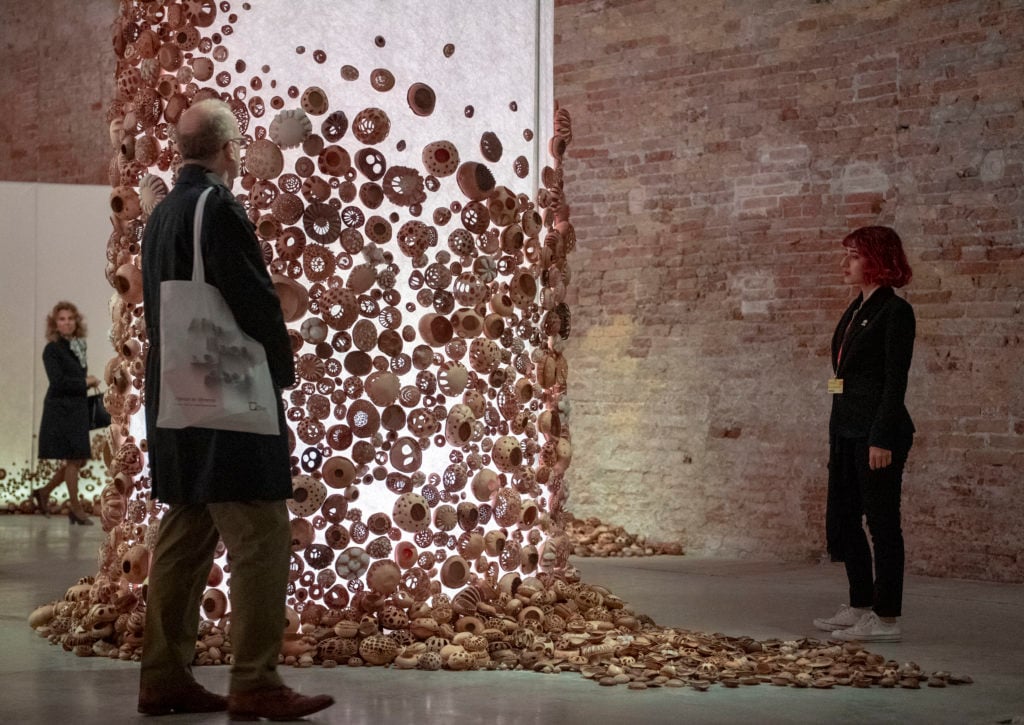
Each nation is taking the opportunity in Venice to reach international audiences.

Arsalan Mohammad

Amid the global heavyweights unveiling their pavilions at the opening of the Venice Biennale last week, a few quieter, yet no less significant narratives were unfolding in the far corners of the Arsenale and next to the Grand Canal.
As Instagrammers flocked to the Lithuanian, Ghanaian, and Belgian exhibitions, a steady stream of visitors also made their way to see the Saudi Arabian Pavilion, which now has a permanent building. This year marks the first time the Kingdom has sent artists to the Biennale since 2011.
Meanwhile, across the water, the Iranian Pavilion was assembled after a series of complicated maneuvers were made necessary by Western-imposed sanctions against the country.
Generally, the rival nations have little in common. Their longstanding feud (they have no formal diplomatic relations) boil over every so often, including last week when Saudi Arabia accused Iran of being behind a drone strike that shut down an oil pipeline. But the exhibitions shared a sense of curatorial seriousness, and presented ambitious works that were laudable and bold.
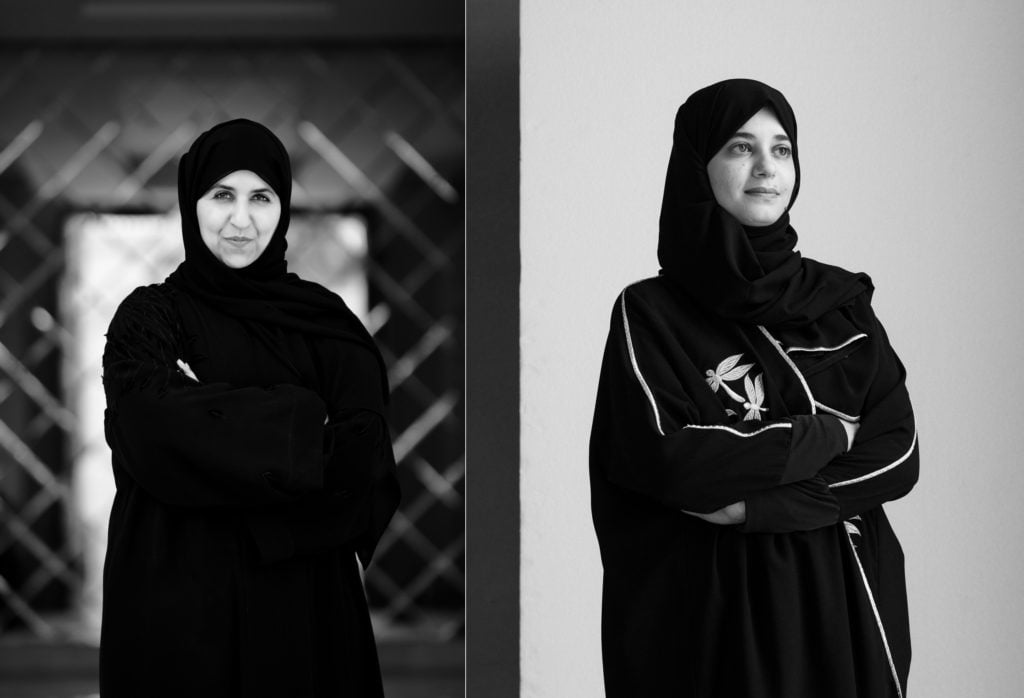
Left: Curator of the Saudi Pavilion, Eiman Eligbreen. Right: Artist Zahrah Al Ghamdi.
Clearly taking Venice Biennale curator Ralph Rugoff’s divisive slogan, “May You Live In Interesting Times,” to heart, the Saudis unveiled an installation by Zahrah Al Ghamdi titled “After Illusion.”
The work comprises textiles on which clusters of shell-like objects hang and pile on the ground, each of which can be squeezed to make distinct noises that are relayed over a sound system. According to the artist, the work is inspired by ancient Arabic poem by Zuhayr bin Abī Sūlmā.
“Saudis have long been living in interesting times,” said curator Eiman Elgibreen, paraphrasing an essay she co-authored with academic Nada Shabout. In another text, by Lina Kattan, the author describes the Pavilion as “seeing the light at the end of the tunnel. Reaching the end is something positive to anticipate. In this case, visitors, as well as the artist herself, recreate the process of creating art that eventually leads to a promising future.”
The pavilion comes at a challenging and inspiring moment in Saudi history. For a nation frequently perceived through a critical lens, artists such as Al Ghamdi are symbolic today of the gathering momentum in confidence and expression among a new wave of artists.
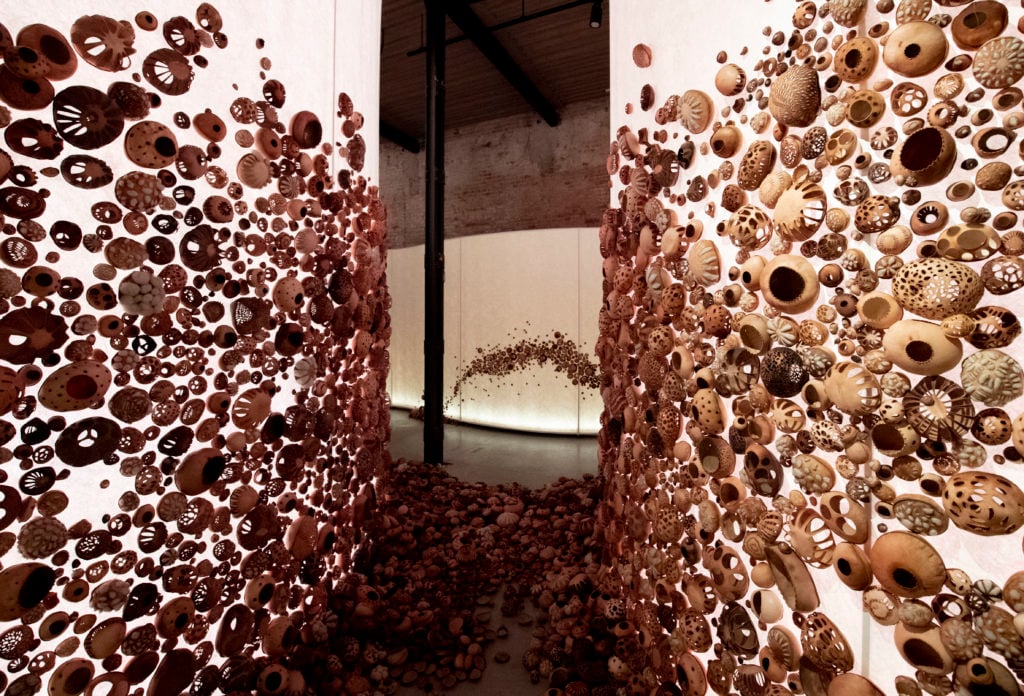
A view of the Saudi Arabian Pavilion at the Venice Biennale. © MiSK Art Institute.
“Zahrah Al Ghamdi defies negative stereotypes about Saudi women,” Eglibreen said. “She was chosen because her handmade pieces, and the many emotions she undergoes, speak to the pavilion’s proposed theme. [Her work] carries the ability to use the past in building a future. While witnessing recent changes in the Kingdom, Saudi artists are envisioning the optimistic future of the Saudi art scene.”
This upbeat prognosis comes with an asterisk. In the West, there is still widespread outrage over the murder of dissident Saudi journalist Jamal Khashoggi, who was assassinated last October. In December, the US Senate squarely blamed Saudi Crown Prince Mohammed bin Salman for the murder, even as some Western cultural figures continue to work with the prince on plans to make the nation a global tourist destination.
But inside the Kingdom, a wave of social and cultural change over the past decade has seen artists emerge from the shadows to become state-supported cultural ambassadors. The prominence of artists such as Ahmed Matar, Abdulnasser Gharem, and Manal al Dowayan, as well as the global exhibition program Edge of Arabia, have all redefined the cultural agenda of a country not famed for having a vibrant art scene.
With regional and global tensions as a backdrop, the Kingdom is now looking for deeper engagement with the wider world. This shift in policy was underlined by the presence in Venice of the Saudi Ministry of Culture, under whose aegis the pavilion fell. The minister’s spokesperson, Abdulkarim Alhumaid, told artnet News of their plans for the immediate future.

Ali Azimi’s work in the Iranian Pavilion at the Venice Biennale. Courtesy of the artist.
“Cultural change is happening fast in the Saudi art world, it’s about making the link between the past, present, and future,” Alhumaid said. “Our aim is to make culture a way of life for all of our people, recognizing that it will enrich lives as well as support a vibrant economy.”
Alhumaid went on to announce plans for 11 new independent state bodies to support art, film, music, performing arts, museums, literature, interior design, cooking, fashion, libraries, and architecture, as well as the launch of a new cultural fund. “And coming up, we have some exciting initiatives, which we will announce soon—including exhibitions, festivals, new museums, and public artworks,” he said.
Asked whether the pavilion was intended to shape foreign perceptions of Saudi Arabia, Eigbreen said, “the pavilion helped visitors see for themselves how matured the contemporary art scene is. Saudi artists are creating positive change, while balancing their national heritage and global developments.” She added: “They are reconsidering the recent shift in the status quo of the Kingdom. These rapid-paced changes are motivating artists to re-imagine the future of Saudi art.”
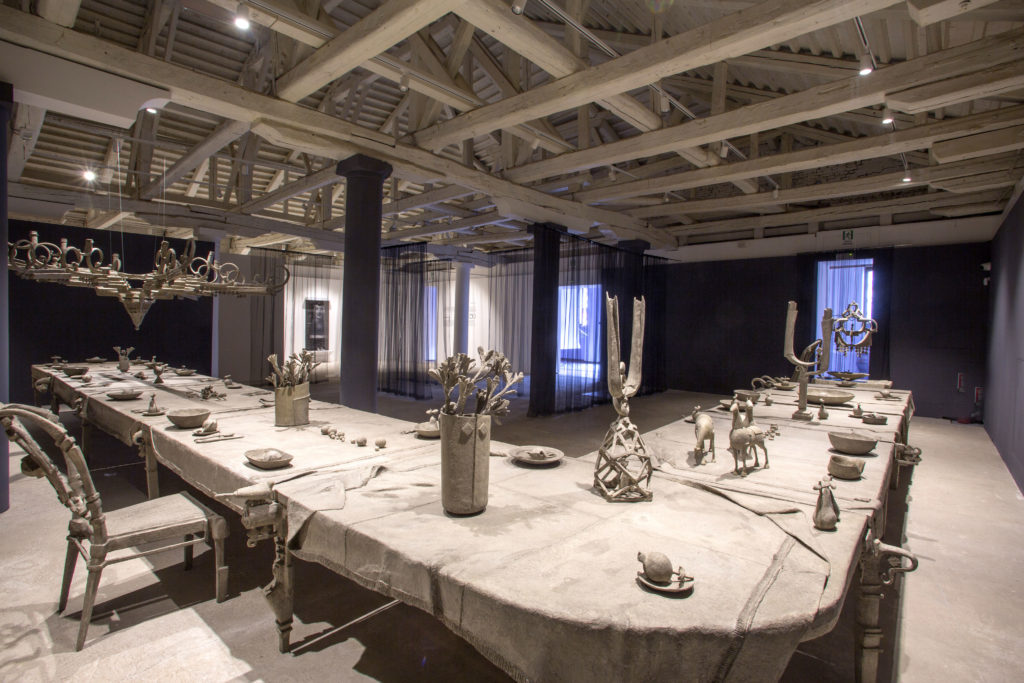
Reza Lavassani’s work in the Iranian Pavilion at the Venice Biennale. Courtesy of the artist.
At the Iranian Pavilion, a show curated by Ali Bakhtiari presents some esoteric multimedia art, and includes works by three young artists drawing on their rich collective heritage of literature, poetry, and visual art dating back millennia.
Titled “Of Being and Singing,” the pavilion featured works by Reza Lavassani, Samira Alikhanzadeh, and Ali Meer Azimi, selected to fulfill the nation’s desire for a gender-balanced group from across Iran. The artists work in media from papier-mâché and steel mesh to surveillance cameras and surrealistic assemblages of found objects.
“The core idea of the exhibition was conceived around the celebration of life, [which is] simple yet very complicated,” Bakhtiari told artnet News, noting that “the exhibition was impossible on paper, but it was made despite all the sanctions.”
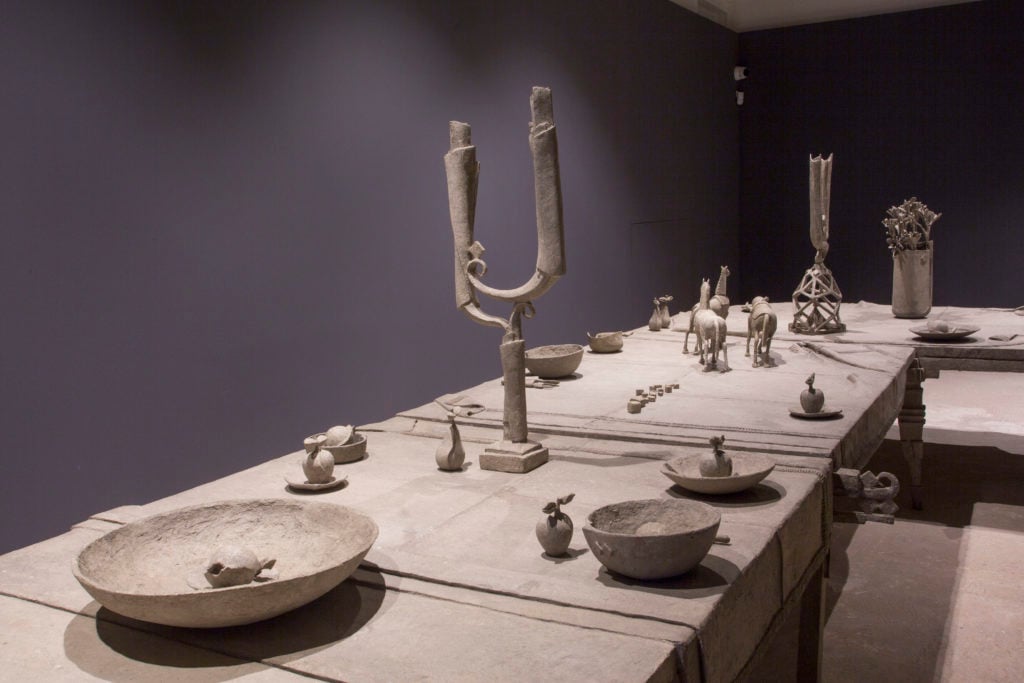
Reza Lavassani’s work in the Iranian Pavilion at the Venice Biennale. Courtesy of the artist.
The overall message of the show was mildly unsettling. The silence hovering above Reza Lavassani’s vast, L-shaped dining table, fashioned from gray papier-mâché, festooned with a gallimaufry of birds, foods, and sculptures made from abstracted calligraphic forms, was weighty and profound. At the end sat a regal papier-mâché throne—a natural conclusion to the table’s narrative flow.
“It took four years to produce this piece,” Bakhtiari told artnet News. “But Samira Alikhanzadeh and Ali Meer Azimi were commissioned for the exhibition.”
Alikhanzadeh’s work is a series of steel mesh screens and scribbled poems, written across the images of glamorous women from the 1950s. Meanwhile, Azimi is showing a mind-spinning immersive installation that includes a video of a small boy tapping at a glass window, seeking a reply from another child, on loop.
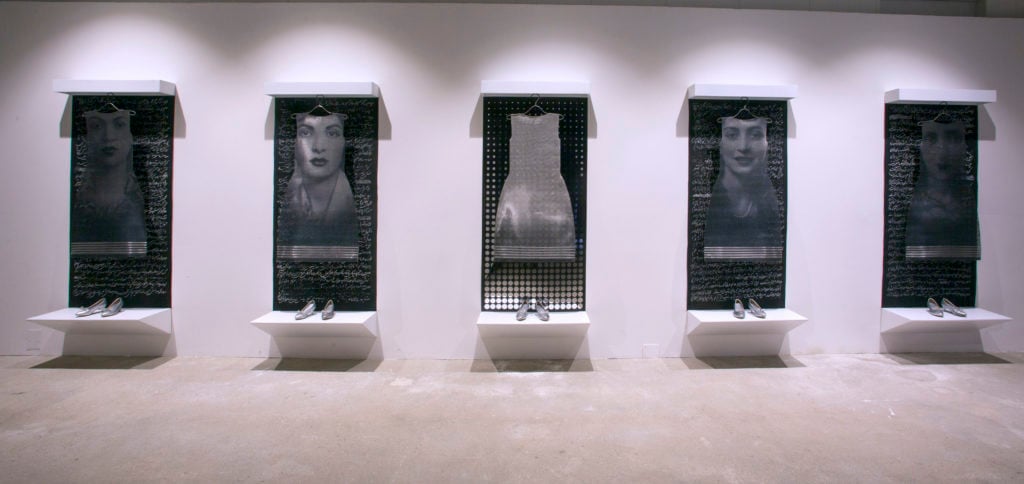
An installation view of the Iran Pavilion at the Venice Biennale. Courtesy of the artists.
The sanctions against Iran, which have made the movement of people and goods into and out of the country especially complicated, are not directly addressed in the work on display. Yet the issue added layers of complications to the already fraught business of curating an exhibition thousands of miles from home. Securing insurance, for instance, proved a particular nightmare for the team.
“We had issues that no country in the world can even think about,” Bakhtiari told artnet News. “There were too many obstacles for the ministry, but they managed to make it feasible by surveying all the possibilities, and our message was finally delivered.”
The country’s message was not so distinct from that of Saudi Arabia: that contemporary art offers new paths across the Gulf—and a new way of connecting with the world.
The Venice Biennale is on view through November 24, 2019; Saudi Arabia’s Pavilion is located in the Arsenale. The Iran Pavilion is located at Fondaco Marcello, San Marco 3415 in Venice.